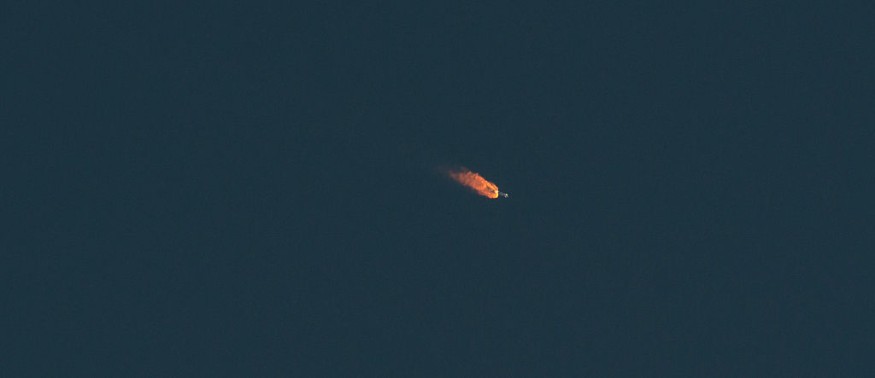NASA's first asteroid sample return mission is on track for its return next year. The Origins Spectral Interpretation Resource Identification Security - Regolith Explorer (OSIRIS-REx) is carrying a sample from the asteroid Bennu and is now on its way back to Earth, although it will not be as easy as dropping a parcel to the doorstep.
Daniel Wibben, trajectory-and-maneuver design lead with KinetX Inc. said that they will gradually adjust the spacecraft's trajectory to move it closer to Earth to ensure safe delivery. Wibben works closely with the team from Lockheed Martin that flies OSIRIS-REx.

OSIRIS-REx's First Successful Course Correction
NASA's OSIRIS-REx spacecraft fired its thrusters for 30 seconds on September 21 to perform a course correction maneuver. According to NASA, this is the spacecraft's first time to alter its trajectory since leaving asteroid Bennu on May 10, 2021. OSIRIS-REx is expected to arrive on Earth on September 24, 2022, to complete its seven-year mission.
The spacecraft will be passing about 1,367 miles (2,200 kilometers) from Earth following its course adjustment. It will have another series of course adjustment maneuvers in July 2023 that will bring it closer to 155 miles (250 kilometers) from the surface.
That distance is close enough for the spacecraft to release its sample capsule for a precision landing using a parachute at the Utah Test and Training Range of the Air Force in the Great Salt Lake Desert. NASA is practicing capsule retrieval with the Air Force and Army to transport the asteroid sample to onsite facilities at the Utah range.
They have built a new curation lab that will store the asteroid sample. Johnson Space Center engineers and curation experts are designing specialized gloveboxes, tools, and storage containers that will preserve the sample's pristine condition upon landing on Earth.
The center is tasked to oversee the distribution of sample portions to scientists worldwide and will also retain and preserve a large fraction of it for future generations to study. The approach is similar to the Apollo Moon mission samples in which some were only now being opened to be studied with technology that did not exist decades ago when the mission was still ongoing.
Asteroids Could Hold the Answer to the Beginning of the Solar System
Asteroids are made up of material from when the Solar System started forming its planets. Scientists are hoping to study them to learn more about the building blocks of the Solar System and life itself.
OSIRIS-REx is set to send the samples from asteroid Bennu to Earth next year, but even before it reaches the planet it has already delivered crucial data that will inform scientists about the asteroid. Space.com reported that the data revealed that the asteroid is so loosely packed that a spacecraft landing on it would have sunk beneath the asteroid's surface.
Furthermore, the spacecraft has also provided NASA with data that will help scientists calculate the potentially hazardous future orbit of the asteroid until 2300, which is crucial in determining if it will impact |Earth after its close approach in 2135.
NASA's Near-Earth Object Observations Program project manager Kelly Fast said in a statement last year that the space agency's Planetary Defense mission is to find and monitor asteroids and comets that may come near Earth and pose potential hazards. The OSIRIS REx has provided an extraordinary opportunity to refine and test orbital models that will help predict Bennu's path.
RELATED ARTICLE: Asteroid 101955 Bennu Has Plastic Ball Pit-Like Surface, NASA OSIRIS-REx Will Bring 250-Gram Sample From Space Rock to Earth in 2023
Check out more news and information on Space in Science Times.
© 2025 ScienceTimes.com All rights reserved. Do not reproduce without permission. The window to the world of Science Times.












